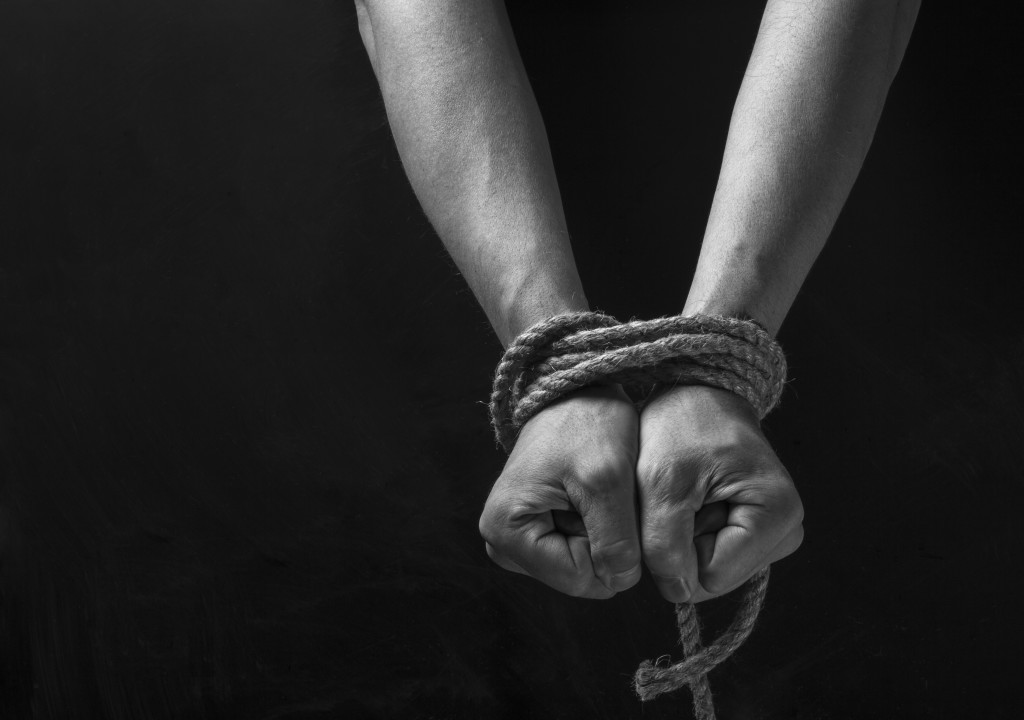.
 |
|
Are we overlooking trafficked boys and men?
by L. Marrick
When we talk about human trafficking, we typically think of sex trafficking. And then we typically think of women and girls.
There's a reason for this. Sex trafficking, from what I've seen in my research, is more prominent than labor trafficking. And women and girls make up about 98% of sex trafficking victims, according to the International Labor Organization.
(There are different stats out there that claim the percentage is lower.
For example, Polaris Project says 85%.) |
When it comes to CHILD sex trafficking in the US, the percentage of male victims is a lot higher. One 2008 study found that a full 50% of sexually trafficked children in New York City were boys.
In the US, victimized men and boys are often overlooked. In fact, up until 2014, there was not even one bed in the entire country specifically set aside for underage male trafficking victims.
What a huge oversight. It points to our lack of understanding about the issue of trafficking—its prominance, the people it affects, and how to address it.
Boys are traded in child pornography and pedophile rings. They are abused in their homes, pimped out by family members or authority figures, and sold in foster care circuits. They are sold online. They are recruited by pimps on the street, or by other boys who are already being sold.
If it can happen to girls, it can happen to boys. Why wouldn't it? Predators aren't exactly known for their boundaries.
One survivor, Jerome Elam, tells his story in Community Digital News, and now works to raise awareness of child trafficking. You can read it here.
Jerome's work is inspiring. Most survivors do not speak out. Especially male survivors.
There's all this cultural and societal stigma around male victimization, so men and boys speak out even less often than girls. And yes, we're venturing into a conversation about gender stereotypes and biases, but that's entirely relevant.
In conversations about trafficking, we typically cast men as the villains and women and girls as the victims. This happens almost automatically in our minds, and transfers to the way people handle the issue officially. (Not creating a lot of resources for male victims is one example of this).
Shame and humiliation are major obstacles for any trafficking victim. In fact, getting someone to admit they've been victimized is one of the hardest things about stopping trafficking. But for men and boys, this touches their core concept of what it means to be male. The shame and humiliation can be enormous.
Here's a quote from an article published by The Chicago Bureau:
“‘Responses are more or less the same – how can a boy be trafficked, they're much stronger than girls, they could get out of it if they wanted to,' says Genna Goldsobel, state policy coordinator of ECPAT-USA, a national anti-trafficking organization based in New York.”
Words like this reveal a deep lack of understanding about the nature of victimization and the psychology of trauma. It's a callous, ignorant point of view that dismisses suffering and blames the victim. “You should have been stronger,” it says.
Even when children do get up the courage to talk to someone, Mr. Elam says they have to tell an average of seven adults before someone believes them. (This goes for boys and girls.)
Why are we not allocating more resources to help trafficked boys? Why, as of 2014, are only about 5% of beds in residential treatment centers designated for men? Why has Abu Dhabi recently opened a center dedicated to male trafficking victims, while we barely acknowledge their existence in the US?
Is it because of the ILO and Polaris Project stats at the beginning of this article—that 85–95% of sex trafficking victims are female? Because 5–15% still sounds like a lot of people to me. And if 50% of child victims are boys? That's even more reason we should be paying attention.
Let's just acknowledge that predators don't really have boundaries. Neither should the resources we create to support their victims.
***
L. Marrick is a fiction writer and freelance copywriter. 50% of proceeds from her book Working Girl, a memoir of her time working for a professional escort, go to sex trafficking non-profits. She waxes poetic about swords and the Renaissance Faire at her author blog. She looks all professional-like at her copywriting site. You can connect with her on Facebook and Twitter @LMarrick.
|